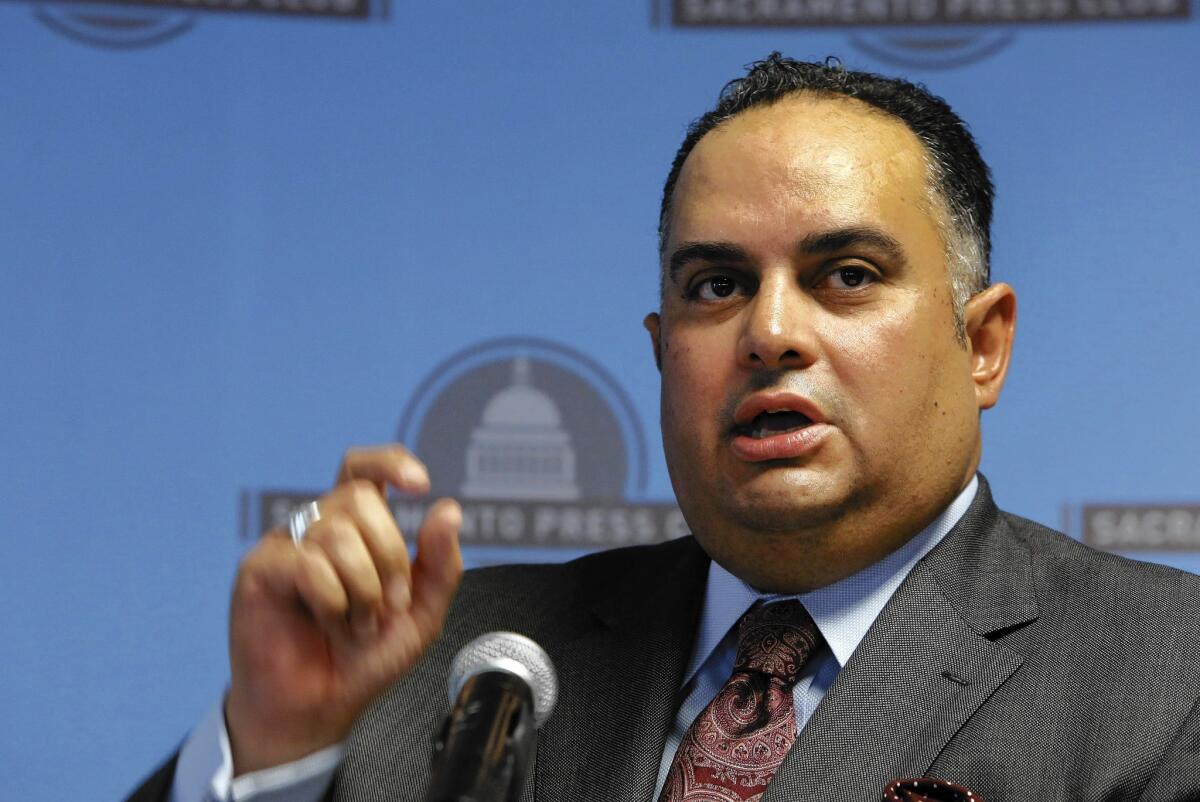Top-two system could force voters to work

- Share via
SACRAMENTO — Voters’ brains in state general elections are programmed to choose between a Democrat and a Republican. Therefore, many Californians may be befuddled in November.
They may have to work harder at their decision — not just be guided by the party label.
There’ll be several races where only members of the same party are running — mostly the Democratic Party. So if you’re a Republican voter, the task will be to select the candidate who’s least offensive.
There may even be some races for statewide office that are contested only by Democrats. One example: controller, in which Assembly Speaker John A. Pérez (D-Los Angeles) and Democratic Board of Equalization member Betty Yee are competing, with no Republican in sight.
Where the one-party trend is most apparent, however, is in legislative races. Nearly a fifth of the 100 contests for the Legislature could wind up in highly competitive one-party runoffs.
“It’s the really big news of 2014” in California politics, says Tony Quinn, a veteran political analyst who closely follows legislative and congressional races. “I think we’re going to have a historic number of same-party runoffs.”
It started in the 2012 elections with the inaugural “top-two” open primary. Under that system, the top-two vote-getters advance to the general election, regardless of their party. Also, a primary voter can choose any candidate.
No longer are there official party nominations, although the parties can influence the outcomes by endorsing and helping to finance candidates, even during the primaries.
The California GOP has become so weak it’s having serious trouble attracting strong candidates for statewide office. In legislative and congressional districts, the problem is that Republican voter registration has fallen into decline.
GOP candidates in Democratic-dominated districts can’t win enough votes to even finish second. But that’s also true for Democrats in a few solidly GOP districts.
In 2012, there were 28 same-party runoffs in legislative and congressional races. But of the 20 legislative contests, only nine were relatively close (within 10 percentage points).
Quinn has identified 17 potentially competitive same-party runoffs this year — 14 in the Assembly, three in the Senate. All are for seats that incumbents are vacating.
It’s still all educated guesswork, however, because the official candidate filing period just opened and doesn’t close until March 7.
The goal of the top-two system is to produce more pragmatic, less partisan officeholders who can work with the other side to solve problems. Fewer rigid ideologues.
It seems to be working.
“I do not see a whole bunch of ideological candidates in either party,” Quinn says. “None seems to be a screamer.”
Dan Schnur — former GOP strategist-turned-academician who’s running as an independent for secretary of state — was a strong advocate of the top-two primary. He says: “In order to run successfully in the top-two primary, you have to talk to people in the other party. That’s a good habit to develop before you go to Sacramento or Washington.
“It changes the way people legislate. They don’t have to spend their whole life looking over their shoulder wondering whether the [party] base is mad at them.”
Allan Hoffenblum, a former GOP consultant who publishes the nonpartisan California Target Book, which chronicles legislative and congressional races, says that the new system will benefit officeholders “who don’t necessarily toe the party line.”
“Most of the criticism comes from hard-core liberals and hard-core conservatives,” Hoffenblum adds. “As long as that criticism continues, I think the top-two is good.”
From the voters’ perspective, it gives them more influence in choosing their representative in Sacramento or Washington. If you’re a Republican in a heavily Democratic district where two Democrats are competing, neither can ignore your vote. It matters.
“Under the old system,” Quinn says, “the Democratic nominee would have been able to go off to Europe for the rest of the campaign after the primary.” Same with the Republican candidate in a heavily GOP district.
But now, the candidates may need to actually converse with voters.
One political problem for the parties is that there could be more fratricidal bloodletting, especially among Democrats. That’s particularly true when labor unions run their candidate against a moderate Democrat.
Labor has blackballed — bullied — Democratic operatives who helped party candidates that unions opposed.
That’s the downside for Democrats, says Democratic strategist Garry South. “Organized labor goes heavily for one candidate, then tries to demonize and punish Democrats who support the other candidate. That’s not acceptable.
“If labor continues to do that, it’s going to have a deleterious effect on the Democratic coalition and sour relations between organized labor and some members of the Legislature.”
Consultants still are learning how to navigate the new system.
“Republicans are having a difficult time because they don’t know how to talk to centrists,” says GOP consultant Ray McNally.
In 2012, he helped Assemblywoman Beth Gaines (R-Rocklin) beat another Republican, an outspoken social conservative. Swinging at the usual GOP issues, she had been striking out. Then McNally learned Gaines had been a teacher, a caregiver and a fighter against child abuse. Home run. Landslide victory.
The top two will be tested big time this year. But so far it’s looking like smart reform.
More to Read
Sign up for Essential California
The most important California stories and recommendations in your inbox every morning.
You may occasionally receive promotional content from the Los Angeles Times.











